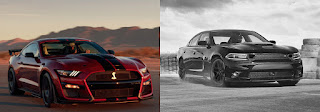Research Genre: Dark Comedy
Good morning, Bloggers! Today is the last genre research blog before our decision!
Camera Angles, Movement, and Shots:
Dark Comedy employs the use of various unusual angles to infuse certain comedic or dark elements. The use of low angles is important when establishing characters with dominance or highlighting flaws within an important character. On the contrary, high angles typically show the vulnerability of a character. Though, in Dark Comedies high angles are used to foreground the absurdity in the plotline. Dutch angles can be used to create a disorientating effect on the audience. Oftentimes, this heightens the discomfort in the narrative.
Regarding camera movements, a plethora of action-packed elements are incorporated. Most commonly, tracking shots, unsteady handheld shots, pans, zooming, and boom shots are used. To start, tracking shots are used to follow a character creating a sense of suspense. Unsteady handheld shots are often employed to contribute to the uneasy feeling of a character. Dark comedies utilize pans, more specifically whip pans, to briefly shift focus to either add a detail of surprise or comedy. Zooming is used in the same way as pans. Boom shots involve using a jig or crane to create a wider view of the subject enhancing the nuanced blend of comedy and darkness. Importantly, smooth camera movements are used to stress the chaos in a particular scene.
Moving on, Dark Comedy uses various shots. In particular static shots are used to add a sense of normalcy against the movement. Typically, lots of camera movement will follow a stationary shot to symbolize the absurdness of a comedic event. Over-the-shoulder shots are used to convey the irony between certain characters. Usually, they are coupled with a two-shot or three-shot. Scenes that emphasize the darkness of a situation are most likely shot in a close-up since the characters’ expressions are most accentuated. When the facial expressions want to be focused on more intensely extreme close-ups are used. In total, the realm of dark comedy uses a huge variety of shots.
Sound:
Dark Comedies manipulate sound elements to narrate light and dark themes. Sound effects are the most prominent in this genre. Auditory gags are used to accentuate certain movements for example when someone is injured. The use of sound effects can be used as a motif of the genre due to its increased frequency. As far as background goes, silence and ambient sounds switch to enhance comedic timing, serve as irony, or hone in on the eeriness of a practical scene. Dialogue is delivered with ironic undertones or deadpan which amplify the distinct mood.
Editing:
In a dark comedy, editing is employed to break up the pace of the narrative, underscore comedic impact, and serve as visual gags. A key component is utilizing the sharp tempo via quick cuts and cutaways. The sudden change in perspective often subverts the expectations of the audience. They act as a rhetorical device playing with the emotions of the audience. Juxtaposition of tempo in the sound and the visual setup is a common tactic to make a seemingly dire situation one that is comedic.
Mise-En-Scene:
As for costumes in dark comedies, they often exaggerate the character’s personality. This can be seen when a character wears a mid-matched outfit to enhance their quirky nature.
Lighting and Color Design are important to create a visually striking atmosphere. Oftentimes contrast lighting is used to play with the light theme and shadow the dark themes.
As for acting, witty remarks are made, ironic reactions are yielded, there is a deadpan delivery, and expressions are heavily exaggerated.
Make-up is used to exaggerate the looks of characters or their character’s features.
Props are employed in an unconventional nature to heighten the contrast in dark comedy. They typically serve as visual gags.
Set design is also important in adding or retracting from a mundane setting. There isn’t one particular location where a dark comedy may flourish.
I personally really like the way the actors can manipulate us as an audience and make us laugh even at jokes that shouldn't be funny. One thing I don't like about this genre though is sometimes the jokes can be taken a little too far and really aren't that funny.
Anyway, thank you all for tuning in, see you next time!



Comments
Post a Comment